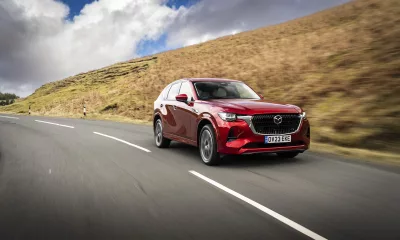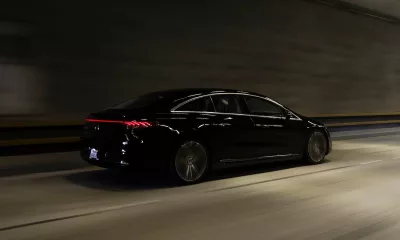
The original Mini is the celebrated hero of the working class. We jumped behind the wheel of a Cooper S to celebrate its global impact…
Over its 41-year lifecycle, the original Mini was a Jack of all trades: an everyday car of the people, star of the silver screen and champion on the racetrack. Where the latter is concerned, its most notable achievement is its victory at the 1964 Monte Carlo Rally. This 52 kW tyke shocked the motorsport world when it dominated giants such as the Ford Falcon and Mercedes-Benz 300 SE with its light weight and nippy chassis. On that day, the Mini achieved icon status.
In order to get the Cooper S homologated for track use, a road-going model had to be built. The original sported 970 cm3 and 1 071 cm3 engines. In 1966, the rally team switched to a 1 275 cm3 unit and the result was similar to the model we’re driving here. Dressed in Almond Green and currently owned by Graham Webb, this Cooper S was proudly built in Mzansi by Leyland South Africa. Over the years, it received an extensive restoration and has been owned by a number of people who’ve obviously lavished it with care and attention.
Under the bonnet, it boasts BMC’s A Series block with a set of twin SU carburettors, which give it that rorty character. Suspending the tiny 10-inch wheels is a hydrolastic setup; a key feature that made the Cooper S so effective through intricate rally stages. Visually, how-ever, there’s little to separate the S from cooking models. One thing is certain: it is commically small. Or so it would seem until you step inside and experience its revolutionary packaging.
Sitting in the Cooper S is initially puzzling because of the amount of space available. There’s no dashboard; all you get is a shelf and a small set of gauges in the centre (a hint of this design cue still evident in the modern range). The partial bucket seats force you higher than the conventional set but they offer more comfort and side support. Everything else in the Mini, from the pedals to the rear-view mirror, is smaller than usual yet the steering wheel measures 400 mm.
Given the lack of power steering, this design decision was truly function over form; a larger steering wheel aids manoeuvring. The seating position is unique; the steering wheel, set at a near 45-degree angle, is well within arm’s reach but the pedals feel a bit too far away. The seat commands an upright posture but, to get a good grip on the wheel, you need to slouch. This position is illustrated to great comedic effect by Rowan Atkinson as Mr Bean while piloting his Mini. It’s a peculiar position at first but feels natural after a few minutes of driving.
A short turn of the key ignites the Cooper S’ four-pot, which receives petrol from two tanks fitted in the boot. To the ear, the carbs are set to perfection, a rarity with twin-carburettors. Unlike other classic cars, the Mini doesn’t favour drivers who are delicate. For such a petite car, your actions have to be deliberate. The doors don’t close unless you add some force and the shifter won’t select reverse gear until you pull it towards you with surprising conviction.
This might make the Cooper S sound a little intimidating to drive but, in truth, it’s far from it. As soon as you press the throttle, the car’s playful nature reveals itself. The hydrolastic suspension is the first element you notice as it gives the tiny hatch a rather bouncy nature, similar to those cartoon cars you would have seen on television. The Cooper S’ engine is also extremely responsive to throttle inputs, so it’s able to get off the line fairly quickly. Interestingly, the gears are longer than on the standard car. This is noticeable by the way it’s unable to use top gear up steep inclines.
The steering is as responsive. It requires small inputs to change the 10-inch front wheels’ angle, darting the little hatch into corners much like a go-kart. The turning circle, though, is horrendous.
On Signal Hill, it’s soon obvious why this car was able to conquer the Monte Carlo Rally three times. The Cooper S takes the engineering principles of low weight and high traction, and elevates the driving experience. Driving the Mini at full attack feels natural rather than life-threatening. The Cooper S makes you feel like a driving champion and then immediately humbles you when you look at the speedometer and realise you’re doing no more than 50 km/h… You only ever need to make full use of second and third gear. Using too much throttle never crosses your mind because the grippy 165/70 R10 tyres aren’t overwhelmed by the modest power output.
It’s at this point I should confess I own a classic Mini, albeit a younger 1974 model but with the same 1 275 cm3 engine (with just one SU carburettor). Thus, getting the opportunity to drive a Mini with such provenance is a true privilege.
This badge turning 60 years old is a big deal because it’s one of the few classic-car communities that most people can be a part of thanks to the pricing accessibility of most older Minis. That’s important to mention because it proves the Mini has stayed true to its initial goal, which was to put a well-engineered car in the hands of everyday people.
FAST FACTS
Model: 1966 Austin Mini Cooper S
Price: ±R350 000
Engine: 1,3-litre, 4-cyl, petrol
Power: 76 kW
Torque: 80 N.m
0-100 km/h: 12,1 seconds
Top Speed: 153 km/h
Fuel Consumption: 6,2 L/100 km
Transmission: 4-speed manual




